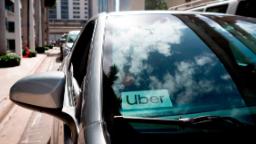[ad_1]

Notably, Uber’s total number of US trips over the two year period fell to 2.1 billion down from 2.3 billion in the first report, and average trips fell from 3.1 million to 2.8 million per day. The company notes that the rate of sexual assault reports decreased by 38% from the first report to the second.
The 141 rape reports in 2020 mark a decline from 2019, in which it recorded 247 reports. During the same period, total trips in the United States fell to 650 million in 2020, from 1.4 billion trips in 2019, according to the report. When it comes to rape reports, such incidents made up 0.00002% of total trips.
“The change in rate of sexual assault reports over time may have been impacted by a number of factors, including how the Covid-19 pandemic altered usage of the platform as well as Uber’s safety and transparency efforts,” Uber said in the report. “But each reported incident represents a harrowing lived experience for the survivor. Even one report is one report too many.”
About 91% of the victims of rape were riders and about 7% of the victims were drivers. Women made up 81% of the victims while men comprised about 15% (nearly double that of the first report).
Uber also reported 20 fatalities as a result of physical assaults over the two-year period, 15 of which were riders. Uber notes that the increase is “similar to national homicide and aggravated assault statistics beginning in 2020 during the pandemic.” It reported 101 motor vehicle fatalities occurred stemming from Uber-related crashes. The report claims that the motor vehicle fatality rate connected to Uber’s platform in both 2019 and 2020 is approximately “half the national average.”
Uber, followed by Lyft, first pledged to put together a safety transparency report in response to a 2018 CNN investigation into drivers on the platform accused of sexual assault or abuse by passengers since 2014, based on publicly available data including police reports. After CNN began asking questions about sexual assaults, Uber announced increased safety measures such as a partnership with RapidSOS, a company that sends a rider’s location and relevant information to a local police agency when the rider uses the emergency button in the Uber app, and the company revamped its approach to background checks.
[ad_2]
